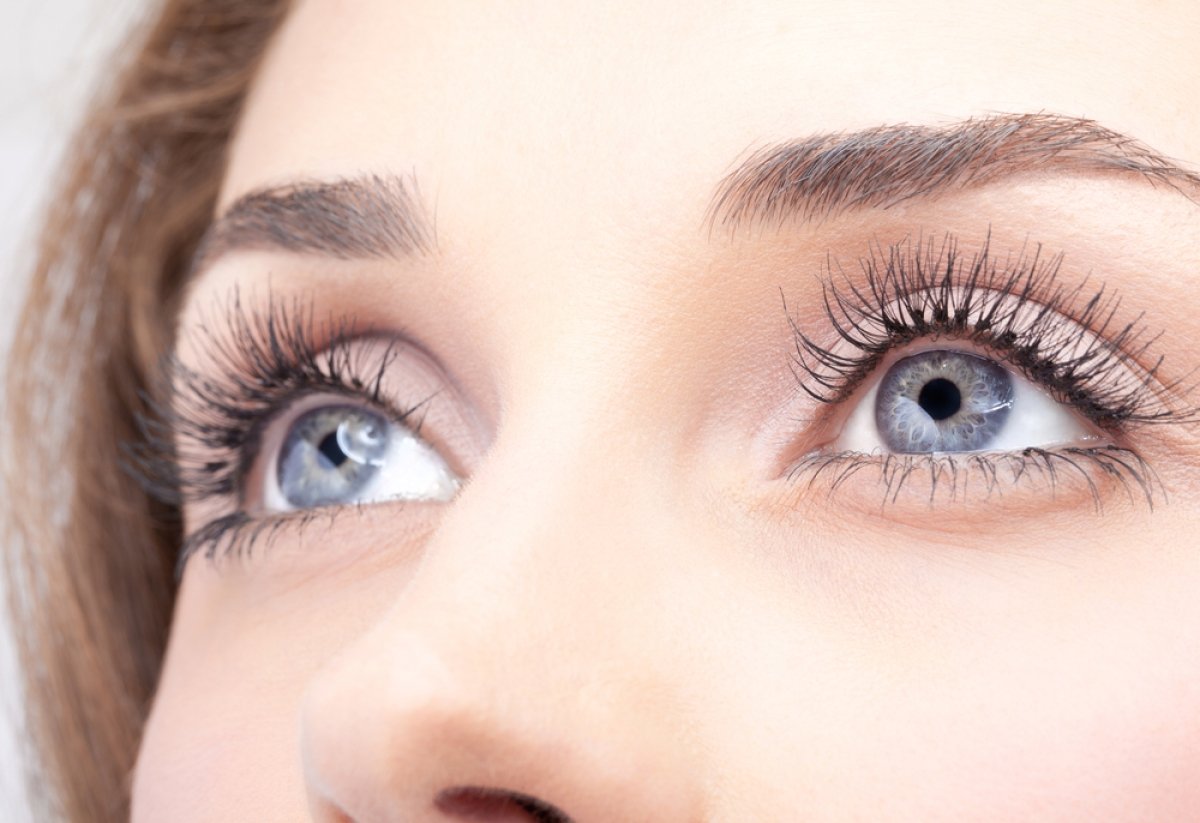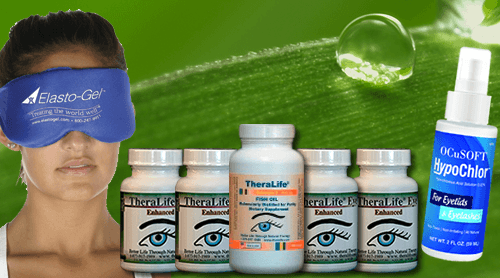To effectively manage blepharitis, relying solely on over-the-counter eye drops is insufficient as they offer only temporary relief without addressing underlying issues like bacterial infections or meibomian gland dysfunction. TheraLife's comprehensive approach offers significant benefits for customers by providing a range of products and solutions that target the root causes of eye conditions. TheraLife emphasizes the importance of professional evaluation, prescription medications, and consistent eyelid hygiene in managing blepharitis. Their products, such as supplements and natural remedies, support overall eye health and target specific issues like dry eyes, inflammation, and eyelid hygiene.
TheraLife's guidance extends to lifestyle adjustments, including dietary changes and home remedies like warm compresses, to enhance the effectiveness of treatment. By offering a well-rounded strategy, TheraLife helps customers genuinely improve their eye condition, ensuring long-term relief and health.
Key Takeaways
- Over-the-counter eye drops provide temporary relief for irritation and dryness in blepharitis but lack sufficient anti-inflammatory effects.
- Eye drops do not address underlying causes like bacterial infections or meibomian gland dysfunction in blepharitis.
- Warm compresses and eyelid hygiene are more effective than OTC drops for managing blepharitis symptoms.
- Professional assessment may lead to prescription medications like antibiotics or steroids for persistent blepharitis cases.
- Lifestyle changes, including omega-3 intake and stress management, support overall blepharitis symptom management.
Understanding Blepharitis: Causes and Symptoms
Blepharitis, a common eyelid inflammation, presents with a variety of causes and symptoms that demand careful attention.
In understanding the causes overview, you should consider factors such as bacterial colonization, sebaceous gland dysfunction, and allergic reactions. These contributors can lead to blocked eyelid glands, fostering an environment conducive to inflammation.
Symptom identification is essential for proper management. You might notice red, swollen eyelids, crusty eyelashes, or a burning sensation in the eyes. Some individuals experience increased tear production, while others suffer from dryness.
Recognizing these symptoms early is important, as they can affect visual acuity and comfort. Proper diagnosis involves a thorough examination of the eyelid margins and gland function, guiding effective treatment strategies for this chronic condition. Treatments for blepharitis often require a comprehensive approach addressing eyelid infection, dry eyes, and clogged meibomian glands.
Types of Blepharitis: An Overview
When exploring the types of blepharitis, it's vital to distinguish between anterior and posterior forms, as each has distinct characteristics and management strategies. Anterior blepharitis affects the outer eyelid margin and is often associated with seborrheic dermatitis or bacterial colonization. In contrast, posterior blepharitis involves meibomian gland dysfunction, leading to lipid tear film instability and ocular surface irritation. This dysfunction can cause symptoms such as dry eyes and redness. Treatments such as TheraLife Eye Capsules promote natural tear production, addressing the underlying causes of blepharitis.
Here's a brief comparison:
| Type | Key Features |
|---|---|
| Anterior | Seborrheic dermatitis, staphylococcal |
| Posterior | Meibomian gland dysfunction, dry eye |
Understanding these differences is important for effective management, as specific treatments target the underlying causes and symptoms associated with each type of blepharitis.
The Role of Over-the-Counter Eye Drops in Blepharitis Management
You might consider over-the-counter eye drops as a viable option for temporary symptom relief in blepharitis, providing short-term alleviation from irritation and dryness. However, their limited anti-inflammatory effects mean they shouldn't be relied upon as a primary solution. Instead, use them as a complementary treatment alongside other interventions to enhance overall management efficacy. Regular eyelid hygiene is crucial to minimize symptom recurrence and should be part of your comprehensive blepharitis management strategy.
Temporary Symptom Relief
Although chronic and often persistent, blepharitis symptoms can be temporarily alleviated with the use of over-the-counter eye drops.
These drops primarily offer temporary relief by lubricating the eye surface, thereby addressing dryness and irritation. As a part of symptom management, they can ease discomfort and redness associated with blepharitis.
Artificial tears, a common type of OTC eye drop, provide moisture that mitigates symptoms but don't tackle the underlying inflammation. It's important to note that Omega-3 fatty acids found in dietary supplements can support tear production and reduce inflammation, offering a more comprehensive approach to eye health.
It's essential to comprehend that while these drops offer momentary comfort, they aren't a substitute for thorough blepharitis treatment.
Consistent use as per recommended dosage can enhance symptom control, yet patients should remain vigilant for persistent symptoms, seeking professional advice for a more robust management strategy.
Limited Anti-Inflammatory Effects
While over-the-counter (OTC) eye drops are widely used for managing blepharitis symptoms, their anti-inflammatory effects are limited. These drops primarily address surface lubrication, offering minimal intervention for the underlying inflammation. Persistent inflammation often requires targeted therapies beyond OTC solutions due to their limited effectiveness. This is critical because untreated inflammation can exacerbate symptoms and lead to chronic issues. For some individuals, opting for specialized eyelid cleansers, like hypochlorous acid solutions, can more effectively disrupt bacterial biofilm and prevent reattachment, offering a more comprehensive approach to managing symptoms.
| Symptom | OTC Effectiveness | Inflammation Status |
|---|---|---|
| Itching | Temporary Relief | Often Persists |
| Redness | Mild Reduction | Limited Improvement |
| Swelling | Minimal Impact | Persistent Inflammation |
| Discomfort | Short-term Relief | Inflammation Remains |
| Tear Production | Slight Increase | Limited Effectiveness |
Complementary Treatment Options
Managing blepharitis effectively often necessitates a multifaceted approach, particularly when over-the-counter (OTC) eye drops provide limited anti-inflammatory effects. Complementary treatments such as warm compresses and dietary supplements can enhance therapeutic outcomes. Warm compresses, applied to the eyelids, facilitate the loosening of crusts and promote the drainage of meibomian glands, thereby reducing inflammation and discomfort. Incorporating omega-3 fatty acids as dietary supplements may offer additional benefits. Research indicates that omega-3s possess anti-inflammatory properties, potentially alleviating symptoms by improving the quality of meibomian gland secretions. Eyelid hygiene is crucial for managing blepharitis symptoms, supported by Mayo Clinic recommendations. When combined with OTC eye drops, these complementary treatments provide a synergistic effect, addressing both surface symptoms and underlying inflammation.
Evaluating the Effectiveness of Over-the-Counter Eye Drops
When evaluating over-the-counter eye drops for blepharitis, you should closely examine the active ingredients, such as lubricants and anti-inflammatory agents, which can provide symptomatic relief by reducing irritation and dryness. However, these formulations often have limitations, including insufficient efficacy for severe cases and potential side effects like irritation or allergic reactions. Considering alternatives, like prescription medications or lid hygiene practices, might be necessary to achieve ideal results in managing blepharitis symptoms. It's essential to understand that dedicated eyelid cleansers are often more effective than over-the-counter eye drops, particularly as they reduce microbial load and ocular surface inflammation.
Ingredients and Benefits
Over-the-counter (OTC) eye drops for blepharitis often contain a variety of ingredients designed to alleviate symptoms and improve eye health. Key active ingredients like lubricants and anti-inflammatory agents provide therapeutic benefits by moisturizing the ocular surface and reducing irritation. Lubricants such as polyethylene glycol and propylene glycol help maintain hydration, easing discomfort from dryness. Anti-inflammatory components, including hypromellose and dextran, target inflammation, a common blepharitis symptom. Additional ingredients, like preservatives and stabilizers, guarantee the product's efficacy and shelf life. However, be cautious if you have sensitivities, as some preservatives can cause irritation. Regular eyelid hygiene is essential to reduce bacterial growth contributing to blepharitis, which can enhance the effectiveness of OTC treatments. Understanding these components allows you to evaluate the effectiveness of OTC options accurately. By recognizing the active ingredients and their benefits, you can make informed decisions about managing blepharitis symptoms effectively.
Limitations and Alternatives
While over-the-counter eye drops may provide temporary relief for blepharitis symptoms, they often fall short in addressing the underlying causes of the condition.
Many blepharitis misconceptions stem from the belief that eye drops alone can cure this chronic inflammation. However, effective management requires thorough eyelid care.
Over-the-counter options don't target the root issues, such as bacterial infection or meibomian gland dysfunction. Instead, consider alternative treatments like eyelid scrubs, warm compresses, and prescription medications.
These methods can enhance eyelid hygiene and reduce inflammation more effectively than eye drops. Always consult an ophthalmologist to develop a tailored plan, as improper treatment might exacerbate symptoms.
For a more holistic approach, Theralife products have been shown to significantly reduce eyelid redness, itching, and irritation, providing a more comprehensive solution compared to standard over-the-counter treatments.
Home Remedies for Managing Blepharitis Symptoms
Dealing with blepharitis symptoms at home can be effective when using evidence-based remedies that address the underlying inflammation and discomfort. Incorporating natural remedies and making dietary adjustments can play a significant role. For instance, omega-3 fatty acids, found in flaxseeds and walnuts, may reduce inflammation. Consuming foods rich in antioxidants, like berries and leafy greens, can bolster eye health. Additionally, maintaining eyelid hygiene through warm compresses and gentle lid cleaning is essential. Regular cleaning and care can significantly reduce flare-ups, while baby shampoo is not recommended for resolving symptoms.
Here's how you can manage symptoms:
| Natural Remedies | Dietary Adjustments | Eyelid Hygiene |
|---|---|---|
| Omega-3 supplements | Increase antioxidants | Warm compresses |
| Flaxseeds and walnuts | Reduce processed foods | Gentle lid cleaning |
| Herbal teas | Hydration | Avoid irritants |
These strategies can alleviate symptoms and improve overall eye wellness.
Prescription Medications: When to Seek Professional Help
When should you consider seeking professional help for blepharitis? If your symptoms persist despite using over-the-counter treatments and home remedies, it's time for a professional assessment.
Blepharitis can be stubborn, and a healthcare provider can evaluate your condition to determine the best course of action. Prescription options may include antibiotic or steroid eye drops and ointments, which target underlying bacterial infections or inflammation more effectively than non-prescription alternatives.
In some cases, oral antibiotics might be necessary. Seeking a professional assessment guarantees you receive a tailored treatment plan that addresses the root causes of your symptoms.
Don't let blepharitis compromise your eye health; consult a healthcare professional to explore prescription options if your symptoms don't improve.
Lifestyle Changes to Support Eye Health
Even with professional treatment, incorporating lifestyle changes can greatly enhance your eye health and manage blepharitis symptoms. Dietary adjustments play an essential role. Consuming omega-3 fatty acids, found in fish and flaxseeds, supports tear production and reduces inflammation. It's beneficial to limit processed foods and sugars, which can exacerbate symptoms. Stress management is equally important. Stress can worsen blepharitis, so consider mindfulness techniques or yoga to mitigate its effects.
Here's a quick guide:
| Lifestyle Change | Benefit |
|---|---|
| Omega-3 intake | Reduces inflammation |
| Limit processed foods | Decreases symptom severity |
| Mindfulness practices | Manages stress-related flare-ups |
The Importance of Eyelid Hygiene
Proper eyelid hygiene is essential in managing blepharitis effectively. You need to incorporate meticulous eyelid care into your daily routines to minimize inflammation and discomfort.
Research indicates that consistent cleaning of the eyelid margins helps remove debris and excess oil, reducing bacterial load and potential exacerbations. Use a gentle, non-irritating cleanser specifically designed for eyelids.
Warm compresses can facilitate the loosening of crusts and stimulate oil gland function. Follow up with a light massage to enhance gland secretion and maintain tear film stability.
Adhering to these daily routines not only controls symptoms but also prevents recurrence. It's vital to prioritize eyelid hygiene as a cornerstone of blepharitis management, ensuring your eyes remain healthy and comfortable.
Potential Complications of Untreated Blepharitis
Neglecting proper eyelid hygiene in blepharitis management can lead to significant complications. Potential risks include chronic inflammation and scarring of the eyelid margins, which can result in meibomian gland dysfunction.
This condition impairs tear film stability, exacerbating dry eye symptoms. Long-term effects might involve persistent discomfort, blurred vision, and increased susceptibility to recurrent eye infections, such as conjunctivitis or keratitis.
Chronic blepharitis may also cause abnormal eyelash growth or loss, further irritating the ocular surface. These complications not only affect visual acuity but also diminish overall quality of life.
Thus, addressing blepharitis promptly and thoroughly is essential to prevent these adverse outcomes. Ignoring symptoms could lead to progressive damage, emphasizing the need for consistent management strategies.
Consulting an Eye Specialist: What to Expect
When you decide to consult an eye specialist for blepharitis, understanding what to expect can alleviate concerns and guarantee a more productive visit.
During your eye specialist consultation, the practitioner will perform an extensive examination of your eyelids, eyelashes, and tear film. They'll utilize diagnostic tools like slit-lamp biomicroscopy to assess inflammation and potential underlying causes.
Treatment expectations will be discussed, often involving a personalized regimen. This may include prescription medications such as antibiotics or anti-inflammatory drops, tailored eyelid hygiene routines, and possible lifestyle modifications.
The specialist might recommend follow-up visits to monitor progress and adjust treatments. By understanding these steps, you'll be better prepared to engage in your treatment plan and manage blepharitis effectively.
Frequently Asked Questions
Can Diet Affect the Severity of Blepharitis Symptoms?
Yes, your diet can greatly affect blepharitis symptoms. Implementing dietary changes may reduce inflammation, a key factor in managing blepharitis.
Omega-3 fatty acids, found in fish like salmon, are known to decrease inflammation. Additionally, incorporating foods rich in antioxidants, such as leafy greens and berries, can support overall eye health.
Avoiding pro-inflammatory foods, like refined sugars and trans fats, can also help manage symptoms effectively.
Consult a nutritionist for tailored advice.
Are There Any Specific Vitamins That Help With Blepharitis?
Did you know that about 50% of adults lack sufficient vitamin D, which may impact blepharitis severity?
Incorporating vitamin D into your diet could provide benefits by potentially reducing inflammation.
Besides vitamin D, omega-3 fatty acids and vitamin A are also beneficial, playing roles in tear production and ocular health.
Consider dietary supplements, but consult with a healthcare professional to tailor your intake to your specific needs and guarantee ideal results.
Is Blepharitis Contagious to Others?
Blepharitis isn't contagious, so you won't transmit it through casual contact.
However, maintaining good hygiene can prevent exacerbation or co-infection. Clean your eyelids regularly to mitigate symptoms and reduce the risk of bacterial overgrowth.
Evidence suggests that while direct contagious transmission isn't a concern, sharing personal items like towels might spread bacteria contributing to blepharitis.
Consistent eyelid care plays a pivotal role in blepharitis prevention and symptom management.
Can Stress Trigger or Worsen Blepharitis Symptoms?
Yes, stress can trigger or worsen blepharitis symptoms.
Stress management and anxiety reduction play essential roles in controlling flare-ups. Research shows that stress-induced hormonal changes can exacerbate inflammation, leading to intensified symptoms.
Implementing techniques such as mindfulness, regular exercise, and adequate sleep can greatly mitigate stress levels.
By maintaining a balanced lifestyle, you can effectively manage blepharitis symptoms and improve overall eye health.
Prioritize stress management for ideal outcomes.
How Does Blepharitis Affect Contact Lens Wearers?
Imagine wearing contact lenses with blepharitis feels like sandpaper against your eyes. You must prioritize contact lens hygiene, as improper care can exacerbate symptoms.
Daily cleaning and replacing lenses as advised help manage discomfort. Evidence shows maintaining lid hygiene and using warm compresses can reduce inflammation.
Research indicates that symptoms management, including avoiding lens wear during flare-ups, leads to improved comfort and prevents further irritation, ensuring healthier eyes.
Conclusion
When dealing with blepharitis, it's natural to question whether over-the-counter eye drops suffice. While these drops may provide temporary relief, they often don't tackle the underlying issues. Theralife.com offers a range of products that enhance eyelid hygiene and tackle the root causes of blepharitis. Their solutions are designed to provide comprehensive eye care, promoting long-term eye health. By incorporating Theralife products, you can enjoy the benefits of improved eyelid cleanliness and reduced symptoms, which over-the-counter drops alone may not achieve. To fully secure your eye health, consider consulting an eye specialist and exploring Theralife's offerings for a complete and effective blepharitis treatment plan.




